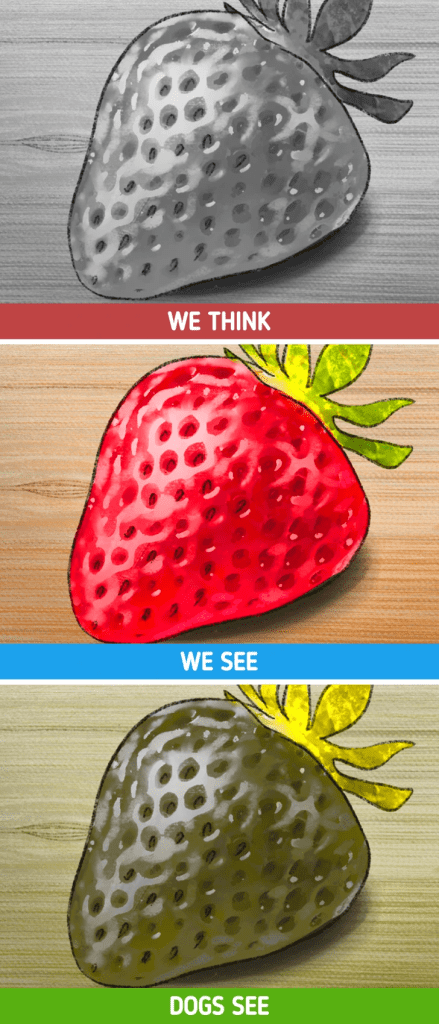Dogs bring joy, companionship, and sometimes a bit of mystery into our lives. Many common beliefs about them—from how they see the world to how we should train them—are steeped in misconceptions. In this article, we’ll explore some fascinating facts, debunk persistent myths, and reveal important things every dog lover should know about their furry friends.
1. Sleeping Positions Reveal Personality Traits

Did you know that how your dog sleeps can provide insight into its personality?
- The Donut Position: When dogs curl up tightly like a donut, they’re protecting themselves, which often signals they may feel anxious or uncomfortable. This position also helps them retain warmth and shield their vital organs.
- The Superman: In this position, dogs lie on their stomachs with limbs stretched out. It’s common among playful, energetic dogs who may want to cool off on a cold surface.
- Side Sleepers: Dogs that lie on their sides tend to be relaxed, easy-going, and very trusting of their environment. This position often indicates a strong bond with their owners.
- Lion’s Pose: Resting with their heads on their paws, dogs in the lion’s pose are just dozing lightly, ready to jump into action if needed.
- Cuddle Bugs: Dogs who love to cuddle up with their humans or other animals are affectionate and social.
- Belly Up: If a dog lies on its back, it’s showing total trust and relaxation. It’s also a way for them to cool off, as the belly has less fur and can release heat more easily.
2. Small Breeds Live Longer Than Large Breeds

It’s a fact that smaller dogs generally live longer than their larger counterparts, but why is this?
While the exact reason remains unknown, scientists believe it may be due to age-related diseases developing earlier in larger breeds. Typically:
- Small Dogs: 10–15 years, with some breeds living up to 18 years.
- Medium Dogs: 10–13 years, though some may live longer.
- Large Dogs: 8–12 years on average.
3. Different Breeds, Different Temperaments

Each breed has its own unique temperament shaped by its history and purpose. Here’s a breakdown of common breed classes:
- Herding Dogs: Energetic and hardworking, herding dogs are athletic and always ready for a task.
- Terriers: Bold and often mischievous, terriers require owners who can match their spirited personalities.
- Hounds: Whether they’re sight or scent hounds, these breeds are known for their tracking abilities and unique traits.
- Sporting Dogs: Often hunters or water retrievers, they’re highly active and excel as therapy or service animals.
- Decorative Dogs: Though small, they have big personalities, often displaying boundless energy.
- Working Dogs: Bred to help people, working dogs are skilled in guarding, rescuing, and other challenging tasks.
- Non-Sporting Dogs: A mixed group with distinct personalities, like Dalmatians, which were originally bred to accompany horse-drawn carriages.
4. Dogs Don’t Need a Meat-Only Diet

It’s a common misconception that dogs should only eat meat. In reality, a balanced diet for dogs includes a variety of food groups. Dogs need nutrients from plant-based sources as well, like vegetables and grains, to stay healthy.
However, human food isn’t always safe for dogs, as it can be too salty, fatty, or spicy. Avoid sharing table scraps, as it encourages begging and can introduce harmful ingredients. Instead, consult your vet to establish a balanced diet tailored to your dog’s needs.
5. How to Stop a Dog Fight Safely

If you ever encounter dogs fighting, remember that jumping in physically can be dangerous. Dogs may redirect their aggression toward you, even if they know you. Here are safer ways to break up a fight:
- Stay Calm: Projecting calmness helps reduce the tension.
- Clear the Area: Move away children or crowds to avoid accidents.
- Use Water: A quick spray of water, particularly near the head, can disrupt their focus.
- Make Noise: Loud sounds, like a whistle or car horn, can surprise them out of the altercation.
- Distract with Objects: Using a blanket or large object may temporarily divert their attention.
These methods allow you to intervene without risking injury to yourself or others.
6. Recognizing When a Dog Might Bite

A dog’s body language reveals when it feels threatened or anxious. Recognizing these signs can help prevent bites:
- Fearful Body Language: Lowered body, tail tucked between legs.
- Aggressive Body Language: Stiff posture, tail held high, intense eye contact.
- Avoidance Signals: Turning away, yawning, or licking lips can signal discomfort.
If you notice these cues, give the dog space and avoid sudden movements. Speaking in a calm voice can also help ease the dog’s anxiety.
7. Dogs See Colors—But Differently from Humans

Despite popular belief, dogs don’t see the world in black and white. They perceive colors differently, much like people with red-green color blindness. While they can distinguish blue and yellow, red and green appear more muted. This unique perspective doesn’t hinder their keen sense of awareness, but it does mean they see the world through a distinct lens.
8. Why Cats and Dogs Often Don’t Get Along

The tension between cats and dogs often stems from miscommunication. Dogs naturally chase small animals, which cats interpret as a threat. Additionally, dogs use playful, excitable behavior that cats view as aggressive.
Because dogs and cats “speak” different languages through their body language, misunderstandings arise. Dogs play by moving around a lot, while cats respond with cautious, defensive postures. Patience, supervised introductions, and training can help them get along.
9. Why Dogs Howl at Music

Dogs’ howling, especially when they hear music, is actually a natural instinct. They may be “singing” in response to certain pitches or melodies, as it mimics communication sounds in the wild. Some dogs even have musical preferences! You can experiment with different types of music to see which your pet prefers. And if the howling becomes excessive, use positive reinforcement with commands like “quiet” to gently curb it.
10. Face Licking: It’s More Than Affection

A dog licking your face could mean several things. It’s not only a sign of affection but also a way of asking for food, as licking is a behavior puppies use to request meals from their mothers. Dogs may also lick as part of social grooming or to show submission. If they’re licking a stranger’s face, it might be a way to calm down someone they perceive as potentially threatening.
11. Training Isn’t Just for Puppies

Contrary to the myth that only young dogs can be trained, adult dogs are often easier to teach due to better self-control and attentiveness. Regular training not only reinforces obedience but also keeps your dog’s mind sharp and engaged. So, don’t hesitate to work with an older dog—they may surprise you with how quickly they pick things up.
Bonus: Why Dogs Resemble Their Owners

There’s actually some truth to the idea that dogs look like their owners. People often select pets with similar facial traits, whether subconsciously or consciously. Psychologists attribute this to the “mere exposure effect,” where we feel more comfortable around things that resemble us. In this case, our own faces become familiar and comforting, making us drawn to pets with similar features.
Conclusion
Understanding the truth behind these myths and learning more about our furry friends helps us appreciate them even more. From how they communicate to their dietary needs, dogs have unique behaviors and personalities that make them special. By debunking common misconceptions, we can build a closer bond and ensure our pets lead happy, healthy lives. Whether it’s adjusting their diet, understanding their body language, or recognizing the nuances in their sleeping positions, each small insight brings us closer to being better pet owners. So next time you catch your dog sleeping in a funny position or howling along to a song, you’ll know a little bit more about what’s going on in their mind!


